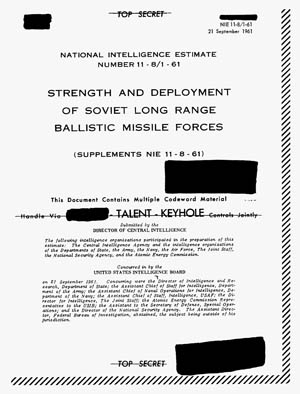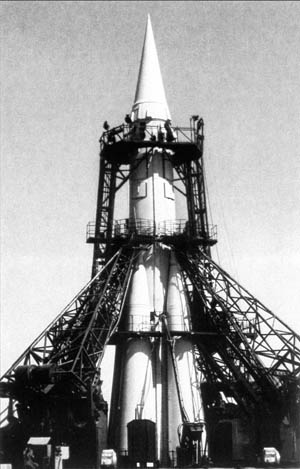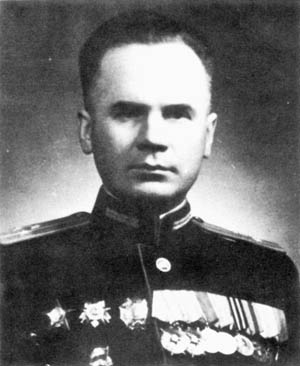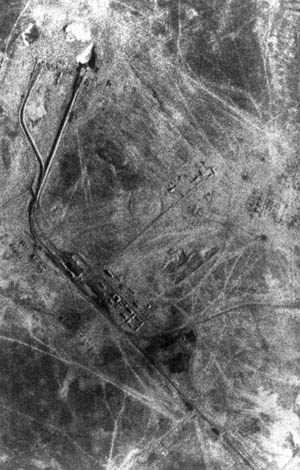What were the Soviets trying to accomplish with Operation Anadyr?
By John D. Gresham
Everyone who has ever read a spy novel knows the basic plot line. A scientist has adult a formula, or intelligence operative has obtained secret plans or a curl or film. Whoever possesses the prize volition tip the balance of ability or an international confrontation in their favor, and both sides fight to the limits of their ability to obtain it. Almost every spy novelist has used this scenario, from Alister MacLean to Tom Clancy. Unfortunately, though, such stories are unremarkably the subject of an overactive imagination. The reality of the modern era is that very few documents or other pieces of information are and so valuable that they are capable of destabilizing the contemporary earth order.
[text_ad]
Annotation the discussion "few." What follows is the story of the one piece of newspaper that changed the course of the Cold State of war, and almost turned it white-hot.
Finding Gaps
The early months of 1961 were hard for the new assistants of President John F. Kennedy. Having come up into role with a pledge of directly confronting America's enemies, the young president was faced with one international crunch later some other. The failed invasion of Cuba at the Bay of Pigs was followed past a failed pinnacle in Vienna with Soviet Premier Nikita Khrushchev, and then by growing problems in Berlin and Southeast Asia. Simultaneously, the Soviet Union was demonstrating a powerful and sophisticated capability for launching men and equipment into space.
These events fed American paranoia virtually Soviet intentions and weaponry, especially in the expanse of strategic nuclear forces. Since the mid-1950s, there had been a growing fear among some Americans that there were a series of "gaps" between U.S. and Soviet military capabilities, to the detriment of the United States. Worries first arose when the Soviet Union developed and detonated its first atomic and thermonuclear weapons.
These were followed by fears that the Soviets had built a huge force of strategic bombers, creating the then-called "bomber gap." Several years subsequently, fears of a "missile gap" adult, when the Soviet Union launched the kickoff intercontinental ballistic missiles, and and then the first earth-orbiting satellite (Sputnik-1) in 1957.
Fear of the various "gaps" led the American public to well-nigh hysteria, and was a cardinal issue in the 1960 presidential campaign won by John Kennedy. He claimed that the administration of President Dwight Eisenhower (including his opponent, Vice President Richard Nixon) had allowed the gaps to develop and done little or zero to make up the differences with U.S. weapons and systems.
Revelations through the U2 Plan
Such claims were practically impossible to prove or deny, but all the same were there when John Kennedy won the closest presidential election on record in Nov 1960. Nevertheless, while Kennedy had won his political battle for position, he now was faced with the challenge of dealing publicly and within the government with the perception that the U.s.a. was behind the Soviet Matrimony in the development of many classes of strategic weaponry.
 The key to determining if gaps existed involved examining what the Soviet Spousal relationship actually had behind the Iron Curtain of its borders. As late as 1956, most of what America and her Allies knew about the Soviet Union came from a handful of short penetration overflights, and World War Two-era Nazi German maps and photographs.
The key to determining if gaps existed involved examining what the Soviet Spousal relationship actually had behind the Iron Curtain of its borders. As late as 1956, most of what America and her Allies knew about the Soviet Union came from a handful of short penetration overflights, and World War Two-era Nazi German maps and photographs.
This all changed in July of that twelvemonth, when the offset of the CIA's U-2 reconnaissance aircraft began to make deep penetration missions into the Soviet heartland. Inside weeks of the showtime series of U-ii flights, the myth of the bomber gap was exposed, and the need for greater production of American bombers re-evaluated. Nonetheless, the dispelling of the bomber gap was hardly a pop move within the U.South. military, particularly with the leadership of the Air Force'southward Strategic Air Command (SAC). Then headed by generals Curtis LeMay and Thomas "Tommy" Powers, SAC was America's primary strategic strike force.
Both LeMay and Powers were ardent anti-Communists, and had advocated use of pre-emptive first strikes against the Soviet Matrimony and its Allies, in what they felt were the best interests of the United States. These men headed a meaning state of war faction within the American government, who felt that the Soviets must non be allowed to attain nuclear superiority over the The states.
Thus, when the fright of a ballistic missile gap emerged a few years afterwards, the need to ostend or deny the existence of Soviet ICBM superiority became the CIA's peak priority. Unfortunately, the loss of a U-2 and capture of its pilot (Francis Gary Powers) on May 1, 1960 put a temporary end to that effort. President Eisenhower, badly stung by public embarrassment from the shootdown, terminated the overflights and the programme was never restarted.
The U2's Replacement
Luckily a few months later, the United states began to wing the commencement of its CORONA-series photoreconnaissance satellites, which redressed the surveillance gap lost when the U-2 overflights of the USSR were canceled. But the early on CORONA satellites were unreliable, likewise as subject field to the limitations of weather and early on rocket-booster engineering.
All the same, the analysts at the CIA's Photographic Intelligence Center (PIC) and Board of Estimates labored long and hard to identify possible Soviet ballistic-missile launch sites. They also worked to assess Soviet missile capabilities to strike at the United States and its Allies.
 Until the tardily 1950s, the CIA's efforts were literal shots in the dark, with the differing opinions of the Air Force, Ground forces, and Naval Intelligence bureaus oft taking precedence over the CIA's more than scholarly attempts to find the truth. These guesses were formed into an almanac National Intelligence Estimate (NIE), which went past the innocuous title of NIE 11. While the quality of the xi-series NIEs improved somewhat with the outset of the U-2 overflights in 1956, it took the coming of CORONA and other Intelligence sources to make each a credible certificate with which to brand national policy.
Until the tardily 1950s, the CIA's efforts were literal shots in the dark, with the differing opinions of the Air Force, Ground forces, and Naval Intelligence bureaus oft taking precedence over the CIA's more than scholarly attempts to find the truth. These guesses were formed into an almanac National Intelligence Estimate (NIE), which went past the innocuous title of NIE 11. While the quality of the xi-series NIEs improved somewhat with the outset of the U-2 overflights in 1956, it took the coming of CORONA and other Intelligence sources to make each a credible certificate with which to brand national policy.
Drafting NIE xi-8/1-61
The story of NIE 11-eight/1-61 begins just a few weeks afterward President Kennedy was inaugurated, when intense discussions broke out about the actual forcefulness of Soviet missile forces and their projected growth in the years ahead. Well-nigh every senior leader in every department touching on national security required this data for critical decisions that needed to be made quickly. Secretary of State Dean Rusk and National Security Advisor McGeorge Bundy needed to know relative U.S./Soviet strategic-missile strengths in society to lay out American foreign policy in the months and years ahead.
As anxious, Secretary of Defense force Robert S. McNamara wanted to size the new force of U.South. 2nd-generation ICBMs to match that of the Soviet Wedlock. Without detailed knowledge of Soviet strengths and growth trends, still, he would have to depend upon estimates forwarded to him by General Powers at SAC. Powers was pressing for an estimated eventual Soviet force of some x,000 Minuteman ICBMs, a number ten times what was eventually built!
The SAC numbers of Soviet ICBM present and projected strength looked to be wildly inflated, but were reflected in the 1960 and 1961 editions of NIE 11-8 (Soviet Long Range Set on Capabilities). NIE eleven-viii-61 estimated that the Soviet Marriage had between 50 and 100 R-vii/SS-six Sapwood and R-16/SS-7 Sadler ICBMs operational, and would have three times that many by the cease of 1962. Clearly a more definitive estimate would exist needed, if the plans and goals of the Kennedy national security squad were to come to fruition.
As a result of a serial of memos between McNamara and Bundy's staff, a request went out to CIA chief Allen Dulles to set up a revised version of NIE 11-8-61 that would make employ of every bit of information available. The idea was to produce a document that would be the cornerstone of rationalizing foreign and national security policy within the Kennedy Administration. Information technology also would exist used to gear up the size of the American military in the 1960s, peculiarly the bomber and missile forcefulness of SAC and the emerging fleet of Polaris fleet ballistic-missile (FBM) submarines.
An accurate assessment was important if the twin goals of American national security and economical prosperity were to be maintained into the new decade. It was a very tall order for a report that would run but 29 pages including the cover sheet. The task would fall onto the National Board of Estimates and its legendary caput, Sherman Kent. As if to make things even tougher, this supplemental, or revised, certificate would need to be produced inside a matter of months.
Equally luck would have it, the CIA had several new sources of information. The kickoff was the 25th CORONA mission, which was launched on June 16, 1961. When its movie-recovery capsule was retrieved after 33 orbits, the analysts at the Motion picture establish the first hard evidence of Soviet ICBM deployments in the Soviet Union. When combined with the previous U-2, CORONA, and other overhead imagery of the Soviet Union, the real condition of the Soviet ICBM program became readily apparent.
 Almost equally valuable was a literal gilt mine of documents on Soviet missile developments supplied by a deeply planted mole. This spy was a Soviet Military Intelligence (GRU) officer by the name of Colonel Oleg Penkovsky. Penkovsky had access to nearly every technical document on Soviet missile developments, and managed to photograph hundreds of them for British and American Intelligence officers. The virtually important and productive agent of his time, Penkovsky managed to evangelize the operational field manuals for every deployed surface-to-air and surface-to-surface missile in the Soviet inventory. The material was collected and classified nether the codeword IRONBARK, which appeared on dozens of high-level briefing documents from the early 1960s.
Almost equally valuable was a literal gilt mine of documents on Soviet missile developments supplied by a deeply planted mole. This spy was a Soviet Military Intelligence (GRU) officer by the name of Colonel Oleg Penkovsky. Penkovsky had access to nearly every technical document on Soviet missile developments, and managed to photograph hundreds of them for British and American Intelligence officers. The virtually important and productive agent of his time, Penkovsky managed to evangelize the operational field manuals for every deployed surface-to-air and surface-to-surface missile in the Soviet inventory. The material was collected and classified nether the codeword IRONBARK, which appeared on dozens of high-level briefing documents from the early 1960s.
Over the spring and summer of 1961, analysts of Sherman Kent's Lath of Estimates and Art Lundal's Picture show labored over their photos and typewriters, trying to craft the nearly powerful certificate possible. While they worked, John Kennedy and Premier Nikita Khrushchev had a tense pinnacle coming together in Vienna and so a face up-to-face confrontation over the building of the Berlin Wall. All the while, the Kennedy Administration was withal operating in the belief of a pro-Soviet missile gap, and treaded lightly as a result. The world seemed on the brink of a tertiary earth war as the new document, called NIE 11-8/ane-61 went to press. Starting on September 21, copies began to get in on the desks of senior decision-makers around the country. The results were stunning.
NIE 11-eight/one-61 stripped clean the American fears of a missile gap in favor of the Soviet Union, and showed that the United States was, in fact, vastly superior in nuclear striking power. As documents go, it was every bit powerful and clear a source of information to ever fall on a government desk. Best of all, NIE 11-viii/61-1 stopped cold the back channel sniping and controversy about the gaps. Although war hawks similar generals LeMay and Powers would keep to abet for straight confrontation with the Soviets, they would do and then as role of a diminishing minority. Within months, the basic nuclear forcefulness construction of bombers, ICBMs, and FBM submarines would exist set by Secretary McNamara and his "Whiz Kids," and would essentially remain unchanged until the stop of the Cold State of war 30 years later on.
Thus within the U.South. Regime, NIE 11-8/1-61 achieved everything hoped of it. However, there were ii other goals for NIE 11-eight/1-61. One was to ameliorate U.Due south. public fears about the Soviet Union's imagined nuclear superiority and the other had more to do with foreign policy, that is, suppressing the Soviet employ of the imagined missile gap for their own global adventures.
Using NIE 11-8/61-1 as Leverage
During the previous few years Soviet Premier Nikita Khrushchev had used claims of nuclear missile superiority for leverage in his aggressive foreign policy. Several times, his merits of Soviet missiles rolling off production lines "like sausages" had brought fear to Western citizens and politicians, and had turned several crisis situations in places like Cuba and Berlin in favor of the Soviet Union.
The rising tensions in Berlin added to the want of Kennedy Administration officials to exploit NIE 11-8/61-1 amongst the public. The difficulty was that the document could non exist leaked, or even shown to the press. The existence of satellite reconnaissance and agents like Oleg Penkovsky were amongst America's well-nigh valuable Intelligence secrets. Revealing such crown jewels even to trusted members of the press was unthinkable to Cold War-era leaders like John Kennedy or Dwight Eisenhower. Furthermore, the Kennedy Administration wanted Khrushchev to know that they were sending him a message in the clear, not through some dorsum channel or diplomatic annotation. After the cord of public humiliations they had suffered, the New Frontiersmen wanted a victory that they could get some mileage out of, fifty-fifty if quietly.
What was needed was a public forum to announce the conclusions of NIE 11-8/61-1, though not too terribly public. Considering the message needed to be heard and noticed, a senior (though not besides senior) Kennedy Assistants official would accept to deliver the information in the form of a policy speech. This is to say, it needed to be an event where the results would exist published and announced, only not heighten a cracking deal of attending from the American public.
Therefore, it was decided that McNamara'southward deputy, Under Secretary of Defense Roswell Gilpatrick, would convey the news about NIE xi-8/61-one to the Soviets in a speech to exist given to the Concern Council at Hot Springs, Virginia. Delivered on October 21, 1961, the speech pulled no punches on the true country of the U.S./USSR nuclear remainder. Just to be sure the message was noticed, Secretary of State Dean Rusk was interviewed the following 24-hour interval, with Secretary McNamara adding his ain comments subsequently the following week. Within days, the bulletin was understood clearly. American public opinion on the gaps began to at-home, and the open hostility from the Soviets over Berlin began to recede. Khrushchev, in fact, having understood the importance of NIE eleven-eight/61-1, began to alter his approach to a number of foreign-policy initiatives.
 Thus in the short term, Kennedy Assistants officials were able to congratulate themselves on their forceful treatment of the gaps crisis, and began to program for the futurity. In that location was, however, going to exist one more than issue—potentially disastrous—from NIE 11-8/61-1.
Thus in the short term, Kennedy Assistants officials were able to congratulate themselves on their forceful treatment of the gaps crisis, and began to program for the futurity. In that location was, however, going to exist one more than issue—potentially disastrous—from NIE 11-8/61-1.
The Cuban Missile Crisis
For about a decade, Premier Nikita Khrushchev had walked a political tightrope. That he had done and so through barefaced and rant makes the achievement even more than impressive in retrospect. Property in check his ain hard-line faction with 1 hand and promoting Soviet power and achievement overseas with the other, he had used the threat of nuclear ICBM strikes every bit the ultimate nuclear umbrella for the socialist world. Then NIE xi-8/61-1 stripped that away, and in early 1962 he had more than problems than any one man should.
Outnumbered in intercontinental nuclear warheads by more than 10 to one, he faced the prospect of a possible commencement strike from SAC and the FBM force that was capable of destroying the Soviet Union in an afternoon. Khrushchev likewise needed to provide some protection for the new authorities of Fidel Castro in Cuba, which had been under set on from U.S.-backed expatriate forces and economic sanctions for three years. There was, in fact, a White Firm-run covert operation (The CUBA Project, besides known every bit Operation MONGOOSE) that had originally scheduled a total-scale U.S. invasion of Cuba for October 1962. Clearly, something had to be done if Khrushchev's many strange adventures and domestic agenda were to exist sustained.
Khrushchev's respond to this mass of troubles would be Functioning ANADYR, the big-scale deployment of Soviet regular army and nuclear missiles to Cuba in the summer of 1962. By moving some threescore of the shorter range SS-four/R-12 and SS-five/R-14 missiles to Cuba, the USSR would increase threefold its deliverable warhead count for U.South. targets. In addition, ANADYR would provide cover for the Castro regime, which desperately feared a U.Due south. invasion.
But the conclusion to run ANADYR covertly led directly to the Cuban Missile Crisis of October 1962, and withdrawal of the Soviet ballistic missiles. In the process, both sides very nearly blundered into a nuclear substitution that might accept killed hundreds of millions of people. The Missile Crisis badly frightened the leaders on both sides of the Iron Curtain, something that haunts survivors to this day. 2 years afterward, Khrushchev would be forced to resign as the Soviet premier, and the Soviet Union would get on an ICBM/FBM building spree, which would but be slowed by the first strategic arms treaties in 1972. The United states would also fulfill the strategic force plans divers subsequently the release of NIE 11-8/61-1, though their nuclear superiority of 1962 would evaporate past the finish of the 1960s.
The Legacy of NIE xi-8/61-one
Every year until the demise of the Soviet Matrimony, updated versions of NIE 11-8 would exist issued by the CIA, each more authentic and credible. Improved imagery from improve CORONA-serial satellites and their successors would guarantee that perceived gaps in strategic-weapons capabilities would never again exist cause for debate and deceit equally they were in the belatedly 1950s and early 1960s. NIE 11-8/61-1 was a milestone document that showed with rare clarity the true remainder of ability between the Cold State of war superpowers.
 Unfortunately, Khrushchev'south nearly desperate Operation ANADYR gambit revealed the dangers of placing an junior nuclear ability into a new public perception of weakness. Strangely, what made NIE 11-8/61-1 so dangerous was not the words and graphics on its 29 pages, only how that data was used in an almost reckless style by the leadership of the Kennedy Administration in the fall of 1961. Futurity presidents and administrations heeded the lesson, fugitive where possible direct debasing of a superpower.
Unfortunately, Khrushchev'south nearly desperate Operation ANADYR gambit revealed the dangers of placing an junior nuclear ability into a new public perception of weakness. Strangely, what made NIE 11-8/61-1 so dangerous was not the words and graphics on its 29 pages, only how that data was used in an almost reckless style by the leadership of the Kennedy Administration in the fall of 1961. Futurity presidents and administrations heeded the lesson, fugitive where possible direct debasing of a superpower.
The survival of mankind to the end of the Cold War is perhaps the ultimate legacy of NIE 11-viii/61-i and other documents of its series. In retrospect, information technology was lack of difficult Intelligence on opposing strategic forces that many present-day analysts and historians consider the greatest threat to peace. The views of war hawks like generals LeMay and Powers might take had greater sway if systems like the U-2 and CORONA had not stripped away doubts virtually actual Soviet strategic-weapons numbers and capabilities.
At best, this would take forced the United States and her Allies to spend much more on their own nuclear forces, draining desperately needed finances from other national and private-sector needs. At worst, it might accept resulted in the nuclear exchange that was just barely avoided during the Cuban Missile Crisis. In this case, the most dangerous document of the Cold War may also take been its most valuable.
wagnershadeopleil.blogspot.com
Source: https://warfarehistorynetwork.com/2016/06/06/cold-war-intelligence/
Post a Comment for "What were the Soviets trying to accomplish with Operation Anadyr?"